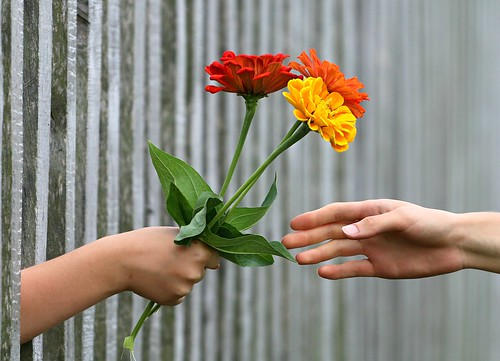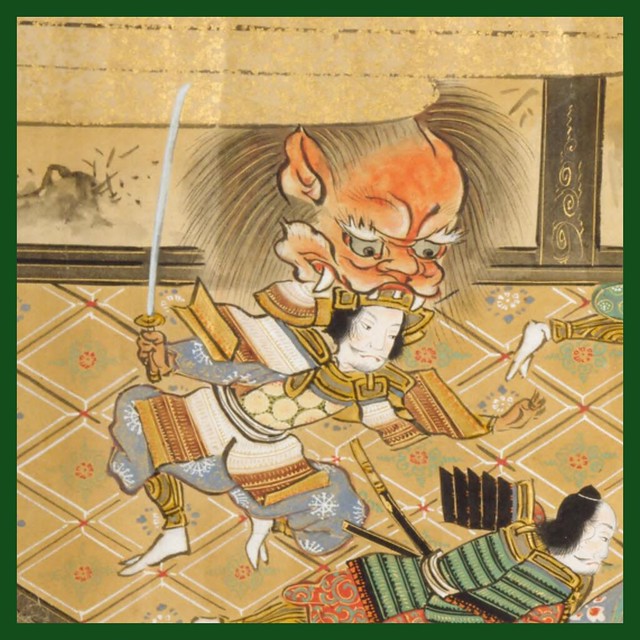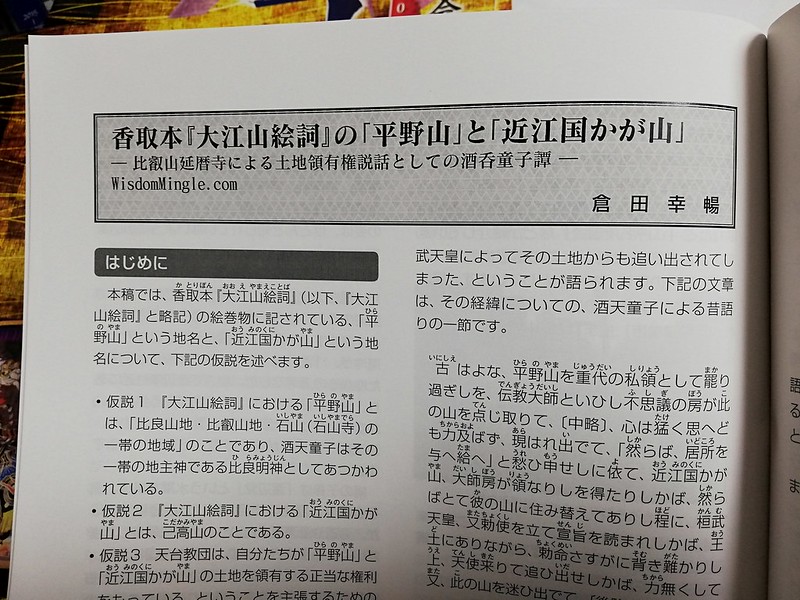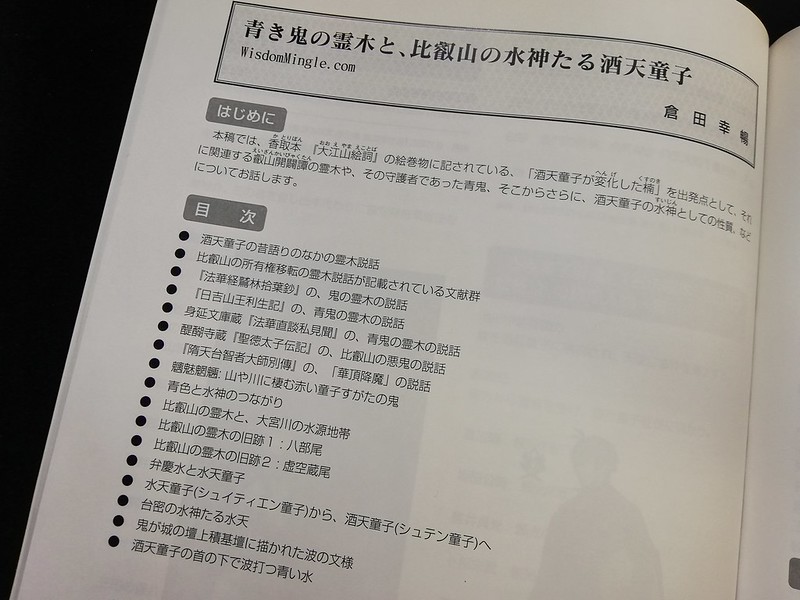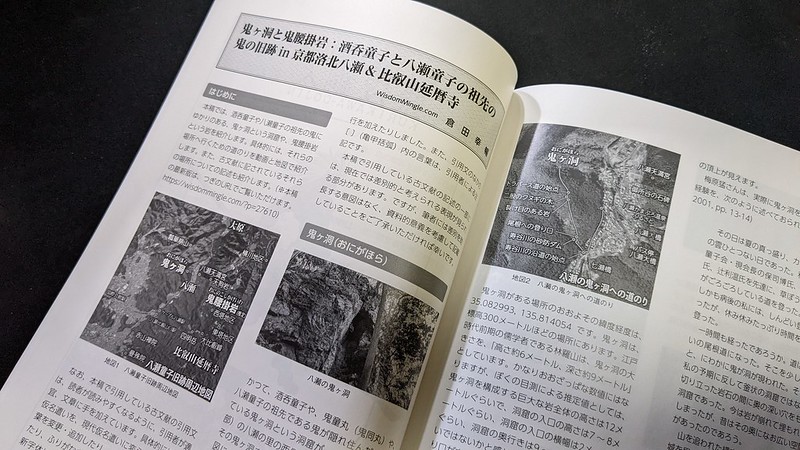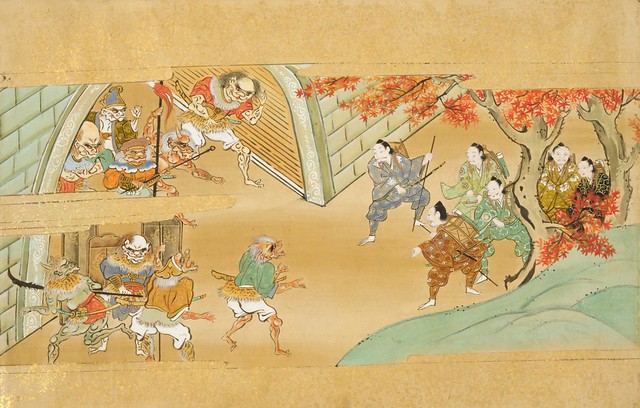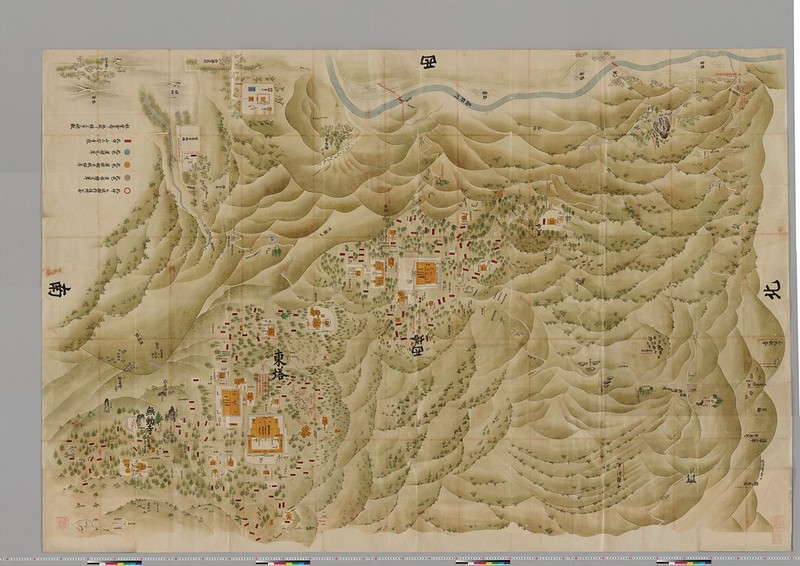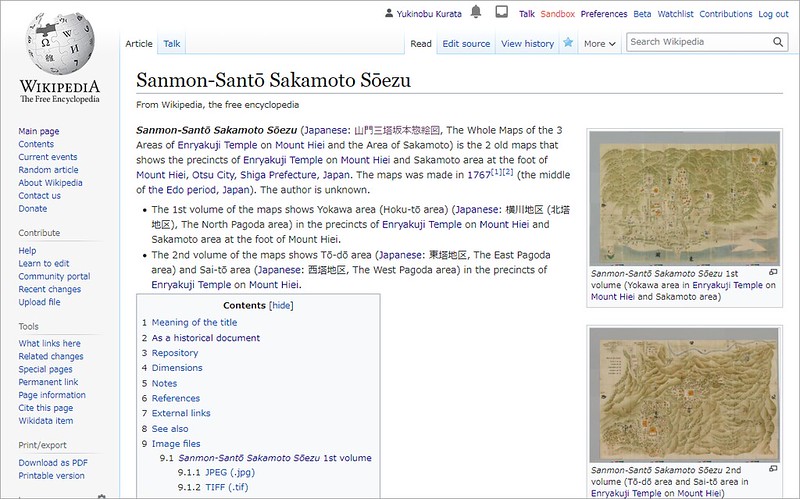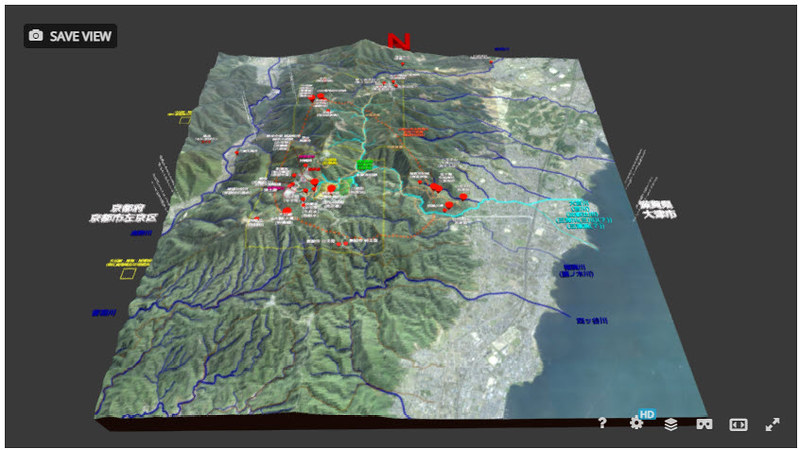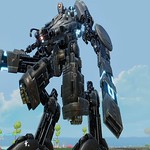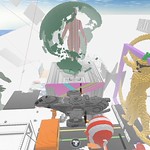Hi, my name is Yukinobu Kurata.
Here I'd like to introduce what I am aiming for and what I am doing to achieve it.
I'd like to convey the following message to the people.
By doing three things—"Study", "Make", and "Share"—about what you find interesting, you can keep doing interesting things and live happily.
"Study", "Make", and "Share" mentioned here are the following activities.
- "Study" : Learning, researching, observing, studying, experiencing, etc.
- "Make" : Doing various creative activities (Writing, drawing, making videos, making music, making things, programming, making 3D models, etc.)
- "Share" : Offering what you have learned or created to others. (Offering as libre and free open content, as the public domain, under an open source license, or for a fee.)
As more and more people do these three things, many different people will be able to bring their own interesting things to the table and tickle each other's curiosity, and this will lead to a more enjoyable society.
This will allow more people to be absorbed in something with their eyes shining.
I think that people can live because they have something to be absorbed in with a twinkle in their eyes. So I hope that everyone can be enthusiastic about something with a twinkle in their eyes.
Such a society in which many people live with their eyes shining is surely a good society. Why don't you join my journey to find a way to make such a wonderful thing come true?
You can support by purchasing a membership NFT here.
In the following parts, in order to convey the above, I'd like to introduce the three activities I do: "Study", "Make", and "Share".
- My activities
- Central theme: Study on legends of Shuten-doji the Oni King
- Writing about study results
- Study report: "Mt. Hirano and Mt. Kaga of Ōmi-no-kuni in The Tale of Mount Ōe in Pictures"
- Study report: "Sacred tree of blue oni and Shuten-doji as the indigenous water god of Mt. Hieizan"
- Study report: "Oni Cave and Oni Sitting Rock"
- Study report: "Legends of Oni at Enryakuji Temple"
- Other articles on my study results
- Releasing cultural properties into the public domain
- Video production : real video images, animation, use of 3D
My activities
Central theme: Study on legends of Shuten-doji the Oni King
In order to convey what I mentioned at the beginning, I myself do three activities: "Study", "Make", and "Share".
Currently, I do these three activities, focusing mainly on the following theme.
-
Study on legends of Shuten-doji the Oni King
(Oni is a kind of demon in Japanese folklore. Shuten-doji is called the King of Oni and the most famous oni in Japan.)Specifically, I study the oldest extant picture scroll describing the legend of Shuten-doji and related fields. The picture scroll was created in medieval Japan around the 15th century. The title of the picture scroll is The Tale of Mount Ōe in Pictures (Japanese: 大江山絵詞, Ōeyama Ekotoba). [2]
(In addition to the central theme mentioned above, there are a variety of other topics of interest me, and I'm working on the three activities listed above for those as well.)
Writing about study results
As one of my study activities on legends of Shuten-doji, I write articles, study reports, blog posts etc. Below are some examples of those activities.
Introductory article on the picture scroll that is my study subject
- Introductory article on The Tale of Mount Ōe in Pictures: the picture scroll that is my study subject (in Japanese)
▲ back to the table of contents
Study report: "Mt. Hirano and Mt. Kaga of Ōmi-no-kuni in The Tale of Mount Ōe in Pictures"
English tentative title of the study report [*]:
"Mt. Hirano and Mt. Kaga of Ōmi-no-kuni in The Tale of Mount Ōe in Pictures: Legend of Shuten-doji as a narrative literature for getting territorial sovereignty by Enryakuji Temple on Mt. Hieizan"
(This is my contributed article to the bulletin vol. 24 of the World Oni Society: Published November 2019.)
(* No translation into English yet. Only the original Japanese version is available now.)
▲ back to the table of contents
Study report: "Sacred tree of blue oni and Shuten-doji as the indigenous water god of Mt. Hieizan"
English tentative title of the study report [*]:
"Sacred tree of blue oni and Shuten-doji as the indigenous water god of Mt. Hieizan"
(This is my contributed article to the bulletin vol. 25 of the World Oni Society: Published January 2021.)
(* No translation into English yet. Only the original Japanese version is available now.)
▲ back to the table of contents
Study report: "Oni Cave and Oni Sitting Rock"
English tentative title of the study report [*]:
"Oni Cave and Oni Sitting Rock: Legendary sites related to Shuten-doji and the ancestral oni of Yase-doji, on Yase area in Kyoto and on Enryakuji Temple area of Mt. Hieizan"
(This is my contributed article to the bulletin vol. 26 of the World Oni Society: Published January 2022.)
(* No translation into English yet. Only the original Japanese version is available now.)
▲ back to the table of contents
Study report: "Legends of Oni at Enryakuji Temple"
Study report [*]:
"Legends of Oni at Enryakuji Temple: A Pilgrimage Through Scenic and Folkloric Spots on Mt. Hieizan"
(This is my contributed article to the bulletin vol. 27 of the World Oni Society: Published January 2023.)
(* No translation into English yet. Only the original Japanese version is available now.)
▲ back to the table of contents
Other articles on my study results
List of other articles on my study results about legends of Shuten-doji
▲ back to the table of contents
You can support by purchasing a membership NFT here.
Releasing cultural properties into the public domain
In studying legends of Shuten-doji, I sometimes come across cultural properties whose copyright protection period has expired. I am also working to release such cultural properties into the public domain. I also write explanatory articles about these cultural properties.
The purpose of this activity is to increase opportunities for anyone to freely conduct study and creative activities using cultural properties.
The following examples are some of these activities.
Releasing cultural properties on Wikimedia Commons
In studying legends of Shuten-doji, I found out about an old map, Sanmon-Santō Sakamoto Sōezu, created in the mid-Edo period. It depicts the precincts of Enryakuji Temple on Mt. Hieizan in Kyoto, Japan.
I went through the process of applying to the National Archives of Japan, which holds the old map, for use of the images of them.
In order to make the images of the old map freely available to many people, I've released them into the public domain on Wikimedia Commons.
・Sanmon-Santō Sakamoto Sōezu (1st volume) - Wikimedia Commons
・Sanmon-Santō Sakamoto Sōezu (2nd volume) - Wikimedia Commons
In addition to the cultural properties listed above, I also released photographs I've taken during research of historic sites associated with legends of Shuten-doji into the public domain (Creative Commons CC0) on the Wikimedia Commons.
▲ back to the table of contents
Contribution explanatory articles on cultural properties to Wikipedia
In conjunction with the release of the above images of the old map, Sanmon-Santō Sakamoto Sōezu, into the public domain, I wrote explanatory articles about the old map and contributed it to Wikipedia (English and Japanese).
I wrote these articles to help promote the wide use of this cultural property.
・Sanmon-Santō Sakamoto Sōezu - Wikipedia
・Japanese: 山門三塔坂本惣絵図 - Wikipedia
▲ back to the table of contents
Video production : real video images, animation, use of 3D
By looking at things from different perspectives, we can better understand them. With this in mind, I aim to convey what I want to convey in different channels of expression so that people can understand it from many different perspectives.
For example, in order to communicate my study results from multiple perspectives, I'm exploring ways to create videos that incorporate various methods of expression, such as real video images, animation, and 3D models.
The following examples are some of these activities.
▲ back to the table of contents
Promotional video of the World Oni Society
・Blog post about making of the following video
▲ back to the table of contents
AI artworks of oni made with image generative AI
Using image generative AI such as Midjourney and Stable Diffusion, I create AI artworks that visually represent the legends of oni associated with Shuten-douji.
The videos below show some of these oni artworks.
AI artworks of the above videos can be viewed at:
A total of 1900+ AI artworks other than these can be viewed here.
In addition to these, I also make AI artworks like the video below with image generative AI.
▲ back to the table of contents
Mini-animation explainer video
・Blog post about making of the following video
▲ back to the table of contents
Introduction video of cultural property
▲ back to the table of contents
Introduction video of places of historic interest and scenic beauty
Introduction video of Oni Cave
・Blog post about the following video
▲ back to the table of contents
Introduction video of Oni Sitting Rock
・Blog post about the following video
▲ back to the table of contents
Introduction video of the tomb of Tendai monk Sōō
・Blog post about the following video
▲ back to the table of contents
Production of 3D maps
3D map of Dai-Hiei area, Tō-dō area and Sai-tō area at Enryakuji Temple on Mt. Hieizan
▲ back to the table of contents
3D map of Obie area and Yokawa area at Enryakuji Temple on Mt. Hieizan
▲ back to the table of contents
Wide-area 3D map of Enryakuji Temple on Mt. Hieizan
▲ back to the table of contents
Production of animation
An example of 3D animation production
・Blog post about making of the following video
▲ back to the table of contents
An example of 2D animation production
▲ back to the table of contents
An example of 2D animation production
▲ back to the table of contents
An example of 3D animation production
▲ back to the table of contents
An example of 3D animation production
▲ back to the table of contents
An example of 3D animation production
・Blog post about making of the following video

▲ back to the table of contents
An example of 2D animation production

▲ back to the table of contents
An example of 3D modeling

▲ back to the table of contents
You can support by purchasing a membership NFT here.
- (無料の写真: 手, ブーケ, フェンス, ギフト, 与えます, 祝います, 関係 - Pixabayの無料画像 - 1549224 by klimkin on Pixabay)[Back ↩]
- The picture scroll, The Tale of Mount Ōe in Pictures, was formerly owned by the priest family of Katori-jingu Shrine. So it is also called as Katori Manuscript (Japanese: 香取本, Katori-bon) or Katori-bon Ōeyama Ekotoba (Japanese: 香取本 大江山絵詞). [Back ↩]
- Image source: 〔A scene in which a Shuten-doji's head bites the helmet of the samurai hero, Minamoto no Yorimitsu.〕, 『大江山酒天童子絵巻物 二』, 国立国会図書館デジタルコレクション, Photo number: 7, (Copyright expired: Public Domain). [Back ↩]
- この絵図のイメージ画像は、香取本『大江山絵詞』の絵図(現状の絵巻の原本の「下巻 第七絵図」)をもとにして、筆者(倉田幸暢)が制作したものです。[Back ↩]
- この「香取本『大江山絵詞』の絵巻のイメージ画像(「上巻」「下巻」「詞書巻」の三巻(絵巻の原本の現状))」の画像は、『続日本絵巻大成 19 (土蜘蛛草紙・天狗草紙・大江山絵詞)』の147ページに掲載されている「大江山絵詞 現装」の写真の挿絵をもとに筆者(倉田幸暢)が制作したものです。)[Back ↩]
- Image source: 〔A scene in which at the gate of the castle of Shuten-doji, oni and the party led by samurai hero, Minamoto no Yorimitsu, encounter.〕, 『大江山酒天童子絵巻物 一』, 国立国会図書館デジタルコレクション, Photo number: 10, (Copyright expired: Public Domain). [Back ↩]

